Search Images
Browse Content (p. 1056)
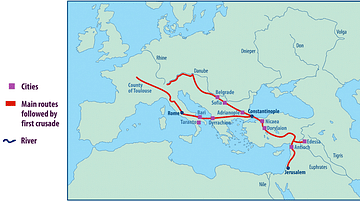
Image
Map of the First Crusade Routes
"This map shows the main routes taken by those who joined the First Crusade. The appeal was made by Pope Urban II in November 1095 CE but crusaders did not set out until the following summer. One route went through Hungary crossing the Byzantine...
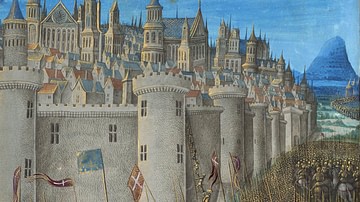
Image
The Siege of Antioch, 1098 CE
A 15th century CE painting by Jean Colombe depicting the First Crusader's attack on Antioch in 1097-8 CE. (Bibliothèque Nationale de France, Paris)
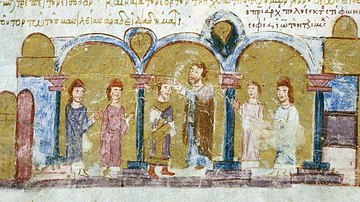
Image
Coronation of John I Tzimiskes
Coronation of John I Tzimiskes
History of John Skylitzes, Madrid, Biblioteca Nacional de España, Vitr. 26-2, fol. 159r
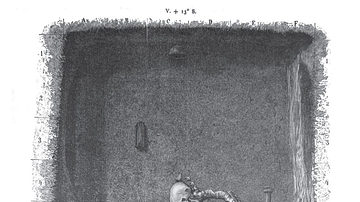
Image
Viking Grave, Birka, Sweden
Sketch made by Hjalmar Stolpe, published in 1889, of the Viking Age grave found at Birka, Sweden, labelled 'Bj 581'. Buried with weapons and horses (things normally associated with warriors), this particular grave has been subject of much...

Image
Oseberg Sleigh
One of four sleighs found in the elaborate ship burial at Oseberg, Norway, where in 834 CE two women were buried in an extremely rich setting with many grave goods such as this sleigh, an intricately carved wooden cart and various textiles...
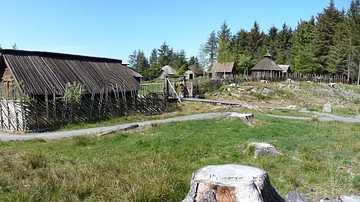
Image
Viking Age Farm, Avaldsnes, Norway
Reconstructed Viking Age (c. 790-1100 CE) farm in Avaldsnes, Norway, including main longhouse and various outbuildings.
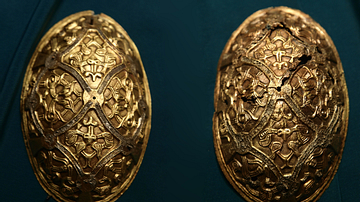
Image
Viking Age Oval Brooches
Two Viking Age oval brooches - also known as tortoise brooches - which were used in a practical way by women to pin up the straps of their overdresses but were often decorated. They came in pairs - one for each dress strap - and are often...
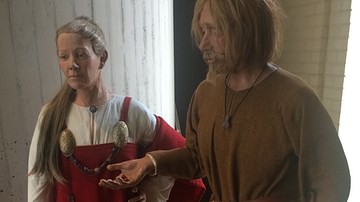
Image
Viking Age Clothing
Reconstructions of Viking Age clothing as found on display at the Archaeological Museum in Stavanger, Norway. The woman is wearing a white shift or underdress, a red overdress (hangerock or smokkr) and two characteristically Viking oval brooches...
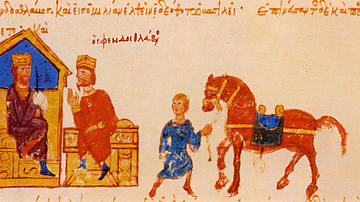
Image
John Tzimiskes Meets Sviatoslav I
Meeting between Emperor John Tzimiskes (r. 969-976 CE) and Sviatoslav I of Kiev (r. 945-972 CE) in the Madrid Skylitzes, fol. 172rb.
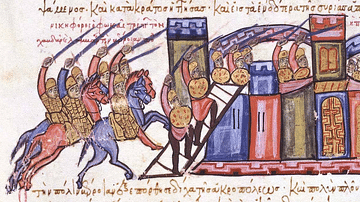
Image
Nikephoros II Phokas Captures Aleppo
Capture of Aleppo by the Byzantines under Nikephoros Phokas in 962 CE.
History of John Skylitzes - Skyllitzes Matritensis (Biblioteca Nacional de España)